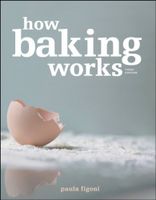🔥 Try our grilling cookbooks and save 25% on ckbk membership with code BBQ25 🔥
Type of Flour
By Paula Figoni
Published 2003
One way to control gluten development is through proper flour selection. For example, the type of grain is an extremely important consideration because wheat flour is the only common grain with the potential for forming a good amount of gluten. Rye flour has about the same amount of protein as wheat, but recall that very little rye protein forms gluten. Any gluten that forms from rye flour is of such poor quality that, except for certain specialty rustic loaves, most formulas for rye bread in North America contain added wheat flour. Other flours, such as oat, corn, buckwheat, and soy, do not form gluten at all. Baked goods made from these flours do not have good gas-retaining or structure-building properties and are dense and compact if no wheat flour is added.
Become a Premium Member to access this page
Unlimited, ad-free access to hundreds of the world’s best cookbooks
Over 160,000 recipes with thousands more added every month
Recommended by leading chefs and food writers
Powerful search filters to match your tastes
Create collections and add reviews or private notes to any recipe
Swipe to browse each cookbook from cover-to-cover
Manage your subscription via the My Membership page
Part of
Advertisement
Advertisement


